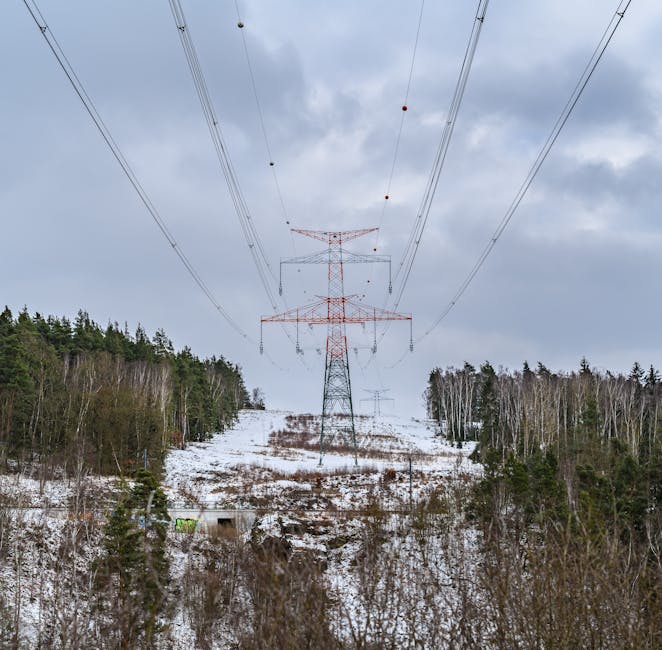The Truth About HAARP and Weather Control What Experts Say
High-Frequency Active Auroral Research Program (HAARP) has been the subject of controversy and conspiracy theories since its inception. HAARP, based in Gakona, Alaska, originally received funding from the U.S. Air Force, Navy, and the Defense Advanced Research Projects Agency (DARPA) to study the ionosphere. While researchers have insisted that HAARP's primary purpose is scientific exploration, some believe it is capable of manipulating the weather and even controlling natural disasters. The idea that HAARP could influence climate patterns has fueled speculation among skeptics, but what do experts actually say about these claims?
The Science Behind HAARP
HAARP sends high-frequency radio waves into the ionosphere, a layer of Earth's upper atmosphere essential for transmitting radio signals. Scientists analyze wave interactions with the ionosphere to enhance communication systems and advance navigation and surveillance technology. HAARP’s capabilities include temporarily heating small sections of the ionosphere to observe resulting changes in atmospheric behavior.

Contrary to conspiracy theories, experts emphasize that HAARP lacks the energy levels needed to influence large-scale weather events. The amount of energy required to manipulate weather patterns or cause storms is far beyond what HAARP can generate. According to a report from the American Geophysical Union, the facility’s transmissions are minuscule compared to natural forces like solar activity or oceanic currents.
Government agencies and independent researchers closely monitor HAARP’s operations. Scientific findings from HAARP experiments are often published in peer-reviewed journals, reinforcing transparency in its operations. The data collected has contributed to advancements in radio communications and space weather prediction rather than any alleged weather modification efforts.
The Origins of Weather Modification Claims
The belief that HAARP could control the weather stems from broader concerns about geoengineering and past attempts at weather modification. Programs such as cloud seeding, which has been used since the mid-20th century to enhance precipitation, have fueled suspicions that more advanced techniques exist. Some theorists argue that if small-scale weather changes are possible through existing technologies, then larger-scale interventions might also be within reach.
The 1996 U.S. Air Force research paper titled "Weather as a Force Multiplier: Owning the Weather in 2025" further intensified speculation. Although this document explored potential future military applications of weather control, it did not reference HAARP directly. Conspiracy theorists linked HAARP to these claims, speculating that it might be a covert military project designed to manipulate the Earth's climate.
Experts refute these claims, noting that real-world weather depends on intricate interactions among atmospheric layers, ocean currents, and solar radiation. No known technology exists today that can effectively control such massive systems on demand. Meteorologists acknowledge that while techniques like cloud seeding can influence local weather under specific conditions, altering the climate on a global scale is still purely theoretical.
Debunking Popular Conspiracy Theories
A range of conspiracy theories surrounding HAARP suggest it has been responsible for hurricanes, earthquakes, and even mind control experiments. These claims often lack scientific backing and are primarily spread through online misinformation channels.
- Hurricanes and Storms:Some believe HAARP manipulates atmospheric conditions to create or direct hurricanes. However, hurricane formation depends on ocean temperatures and atmospheric pressure systems, factors well beyond HAARP’s operational capabilities.
- Earthquakes: Another theory suggests that HAARP's transmissions penetrate deep into Earth's crust, causing seismic activity. Seismologists reject this notion as ground movements originate from tectonic forces unrelated to radio wave activity.
- Mind Control: Some conspiracy narratives allege HAARP emits frequencies that influence human thoughts or emotions. Neuroscientists dismiss this claim since human cognition does not respond to high-frequency radio waves used by HAARP.
The scientific consensus indicates that HAARP’s impact is limited to controlled ionospheric experiments with no capacity for large-scale environmental manipulation. Research debunks these myths with evidence-based explanations for natural disasters and atmospheric events.
Advancing Ionospheric Research
Since its transfer to the University of Alaska Fairbanks in 2015, HAARP has continued its research under civilian oversight. The facility now supports academic studies focused on space weather phenomena rather than military applications. Scientists analyze it to study solar storms, enhance satellite communication, and examine atmospheric disruptions from natural events like geomagnetic disturbances.
HAARP stands out among global ionospheric research facilities for its contributions to scientific advancements.
| Facility | Location | Primary Purpose |
|---|---|---|
| EISCAT | Northern Europe | Ionospheric heating & auroral studies |
| Sura Ionospheric Heating Facility | Russia | Ionosphere modification experiments |
| Arecibo Observatory (before collapse) | Puerto Rico | Ionosphere research & radar astronomy |
| MST Radar Facility | India | Tropical atmospheric studies |
The study of Earth's upper atmosphere remains essential for technological advancements in communication and navigation systems. As scientists refine their understanding of space-weather interactions, facilities like HAARP contribute valuable data without posing any verified threats related to weather control or environmental manipulation.
The persistent myths surrounding HAARP reveal how misinformation can spread when science is misunderstood or misrepresented. While concerns about geoengineering are valid within ethical debates on climate intervention technologies, attributing natural disasters to a research facility lacks factual basis. Experts emphasize the need to separate credible scientific research from unfounded speculation in discussions about programs like HAARP.
The truth about HAARP remains clear, its purpose is rooted in scientific exploration rather than climate warfare or disaster engineering. Public education on this topic is essential in dispelling myths while encouraging informed discussions on atmospheric research and technological innovation.